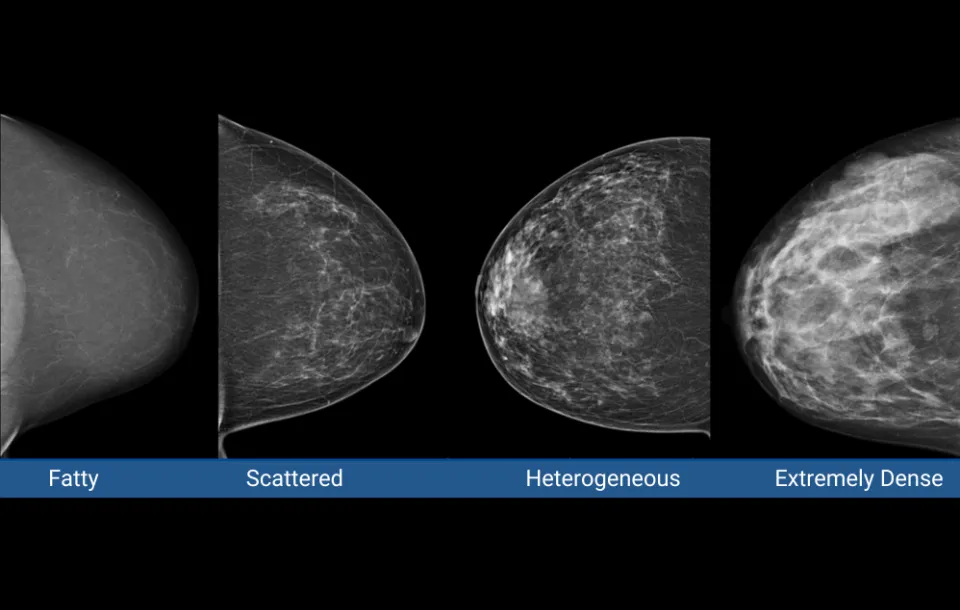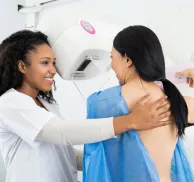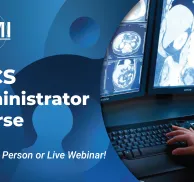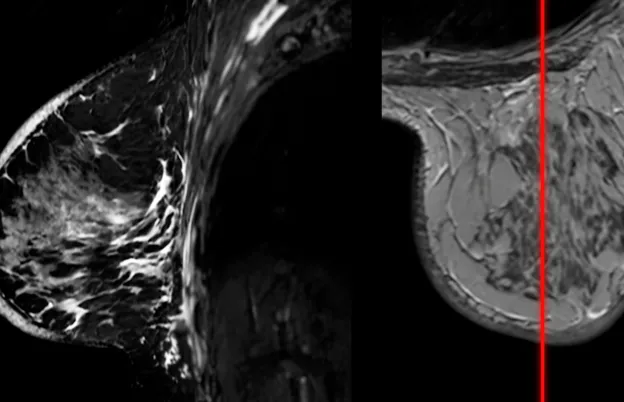
Understanding Dense Breasts: A Guide to Effective Imaging Choices
About this Program
This webinar will provide insights into breast anatomy and the hormonal factors that can lead to dense breast tissue. Participants will learn about the causes of dense breast tissue and the history of dense breast legislation, including the new federal MQSA laws. The webinar will also honor the pioneers of previous state laws, sharing their personal stories of developing breast cancer that was missed on screening mammograms.
Additionally, the webinar will explain various supplementary breast imaging modalities and how they can improve sensitivity rates for detecting breast cancer. Each modality's pros and cons will be discussed, supported by case studies to enhance understanding. The two most commonly recommended supplementary imaging techniques, breast ultrasound and breast MRI, will be highlighted.
Educational Objectives
By the end of this webinar on understanding dense breasts, attendees will:
- Understand the structure and function of the breast, focusing on the factors that contribute to dense breast tissue
- Recognize key advocates who played a crucial role in passing state laws for dense breast notification
- Identify the first state to pass dense breast legislation and the year it was enacted
- Review the history of state laws on dense breast tissue and understand why some states lacked such regulations
- Understand why state laws were updated to the new MQSA federal law and what changes were implemented
- Explore the latest mammography machines equipped with breast density software
- Learn about computer software that assists radiologists in selecting breast density categories
- Identify additional imaging modalities that help detect breast cancer earlier in patients with dense tissue
- Understand the benefits and limitations of each adjuvant imaging modality, including insurance coverage and potential out-of-pocket costs
Schedule
What this course will cover
- Breast Anatomy and Physiology and the Cause of Dense Breast Tissue
- Internal Breast Anatomy: Ducts and lobules
- External Breast Anatomy: Skin and breast margins
- Physiology of the Breast: Affected by female hormones
- Factors: Genetics, hormones, and lifestyle
- Meet the First Two Heroes to Help Start State Laws for Dense Breast
- Dr. Nancy Capello
- Dallas Realtor, Henda Salmeron
- First State to Have a Dense Breast Law
- 2009
- State of Connecticut
- State of Texas
- Dense Breast State Laws Compiled of Only 38 States Involved
- Why were only 38 states involved with dense breast laws
- No consolidation or reports and confusion on regulations
- New Mammography Units Incorporate Dense Breast Categories Software
- 2018: First year for Siemens Mammomat Revelation
- 2024: Followed with Siemens Mammomat B.brilliant
- Software: Available for radiologist assistance
- Adjuvant Breast Imaging for Dense Breast
- Breast Ultrasound/ABUS
- Breast MRI
- Insurance: More likely to cover these screening tests
- Contrast and Gamma Breast Imaging
- Contrast Enhanced Mammography (CEM): Uses iodine
- Molecular Breast Imaging (MBI): Uses Technetium 99
- Computed Tomography Breast Imaging
- FDA Approval: 2017
- Manufacturer: Koning
- Comparison: To other breast modalities
- IX. Medication Therapy
- Hormone Therapy: Estrogen and progesterone
- Topical Treatments: Creams to reduce dense breast tissue
Audience
Who should attend?
This webinar is ideal for mammography, mri and ultrasound technologists, as well as any medical imaging or healthcare professional interested in understanding dense breasts.
Program Faculty
Meet your presenter(s)

Deborah Davis
MSRS, RT(R)(M)(QM)
Deborah Davis has been a mammographer for almost 30 years. She was a lead mammographer at MD Anderson Cancer Center for over 25 years. Performed diagnostic and screening exams, stereotactic breast biopsies, breast localizations, executed quality control, and mobile mammography. She retired in December 2023, but works part time. Deborah has taught continuing education in mammography since 2006, and has been with MTMI since 2020. Deborah created a mammography curriculum at the University of Texas MD Anderson School of Health Professions and lead the program for four years before retiring. She continues to teach portions of the initial mammography program including digital breast tomosynthesis 8-hour requirement. She also teaches several other mammography continuing education courses. Breast health is her compassion and she continues to share her experiences and knowledge to allow the future generations to continue the fight.
Credits
Accredited training programs

ASRT Category A
This program provides 4 hour(s) of Category A continuing education credit for radiologic technologists approved by ASRT and recognized by the ARRT® and various licensure states. Category A credit is also recognized for CE credit in Canada. You must attend the entire program to receive your certificate of completion.
Tuition

| Audience | Price | Early Price | Member Price | Member Early Price |
|---|---|---|---|---|
| Technologist | $99.00 | $95.00 | $90.00 | $85.00 |
Early Pricing Guidelines
Qualifying 'Early' registrations must be made at least 4 days in advance for the program.
Cancellation Policy
Webinars less than 8 hours of credit
Refunds, minus a $15 processing fee, will be granted for cancellations received at least 3 days prior to the program. Cancellations received within 3 days of the webinar will receive a credit toward a future MTMI program, minus the $15 processing fee. No refunds will be made after the webinar starts. MTMI reserves the right to cancel any scheduled program because of low advance registration or other reasons. MTMI’s liability is limited to a refund of any program tuition paid. WEBINAR ATTENDEES that cannot log in due to unsolvable technical issues beyond their control will be eligible for a full refund.







